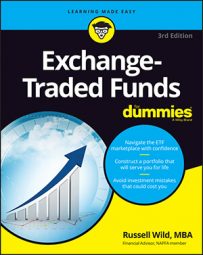Of the 100 or so large cap ETFs on the market, perhaps 20 or so are worth particular attention for tapping into the value market. The following five offer good large value indexes at reasonable prices. Read through the descriptions and make the choice that’s best for you.
The criteria to pick the best large cap value ETF should include expense ratios, appropriateness of the index, trading cost, and tax efficiency. Expense ratios, average cap sizes, price/earning ratios, and top five holdings are all subject to change; check for updated figures before investing.
Vanguard Value Index ETF (VTV)
Indexed to: MSCI U.S. Prime Market Value Index (400 or so of the nation’s largest value stocks)
Expense ratio: 0.12 percent
Average cap size: $50.7 billion
P/E ratio: 14.9
Top five holdings: Exxon Mobil, Chevron, General Electric, AT&T, Procter & Gamble
The price is right. The index makes sense. There’s good diversification. The companies represented are certainly large. This ETF is a very good option. If held at Vanguard, this ETF, like all Vanguard ETFs, trades for free.
Vanguard Mega Cap 300 Value Index ETF (MGV)
Indexed to: The MSCI U.S. Large Cap Value Index (150 or so of the largest U.S. stocks with value characteristics)
Expense ratio: 0.13 percent
Average cap size: $84.8 billion
P/E ratio: 14.4
Top five holdings: Exxon Mobil, Chevron, General Electric, AT&T, Procter & Gamble
This fund offers exposure to larger companies than does the more popular VTV featured above. If you have small caps in your portfolio, this mega cap fund will give you slightly less correlation than you’ll get with VTV, making your portfolio more diverse.
As a stand-alone investment, the very long-term returns on this fund will likely lag VTV, given that giant caps historically have lagged large caps. Given Vanguard’s low expenses and reasonable indexes, either fund would make a fine holding. MGV also trades free of commission if held at Vanguard.
iShares Russell 1000 Value ETF (IWD)
Indexed to: The 600 or so more-valuey stocks in the Russell 1000 Index (the largest 1,000 publicly traded companies in the land)
Expense ratio: 0.20 percent
Average cap size: $74.9 billion
P/E ratio: 13.0
Top five holdings: Chevron, AT&T, Procter & Gamble, JPMorgan Chase, Pfizer
The cost isn’t high, but it is higher than the comparable Vanguard and Schwab funds. On the other hand, this ETF offers a slightly more valuey lean than the others. Like a number of other broad-based iShares ETFs, IWD trades free if held at Fidelity.
iShares Morningstar Large Value ETF (JKF)
Indexed to: Morningstar Large Value Index (76 of the largest U.S. value stocks, “value” being determined by Morningstar’s proprietary formula)
Expense ratio: 0.25 percent
Average cap size: $101.7 billion
P/E ratio: 15.9
Top five holdings: Exxon Mobil, Chevron, AT&T, JPMorgan Chase, Pfizer
Between Exxon Mobil and Chevron nearly one-fifth of the fund in two stocks, both in the same oily industry. To boot, Morningstar indexes aren’t nearly as popular as S&P indexes, so this ETF is thinly traded, which could result in a larger spread when you buy or sell.
On the positive side, however, Morningstar indexes are neat boxes: Any company that appears in the value index is not going to pop up in the growth index.
Schwab U.S. Large-Cap Value ETF (SCHV)
Indexed to: Dow Jones U.S. Large-Cap Value Total Stock Market Index (made up of the more valuey half of the 600 or so stocks that comprise the DJ U.S. Large Cap Stock Market Index)
Expense ratio: 0.13 percent
Average cap size: $75.9 billion
P/E ratio: 14.1
Top five holdings: Exxon Mobil, General Electric, Chevron, International Business Machines, Procter & Gamble
The management fee is one of the lowest in the industry. Like all Schwab ETFs, you can trade this fund for free if held at Schwab. Most importantly, the index is a good one.

